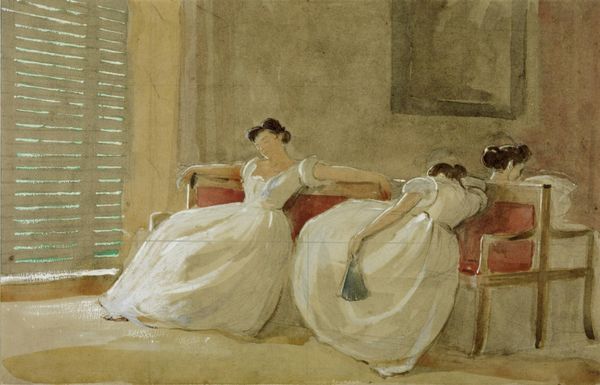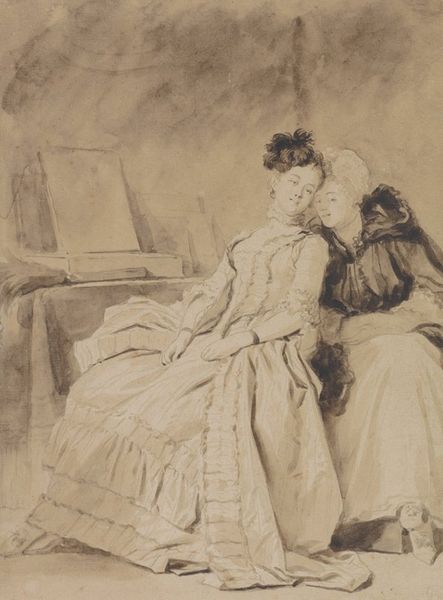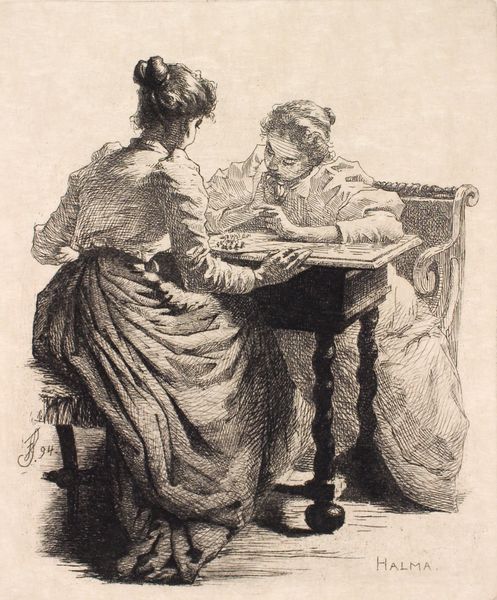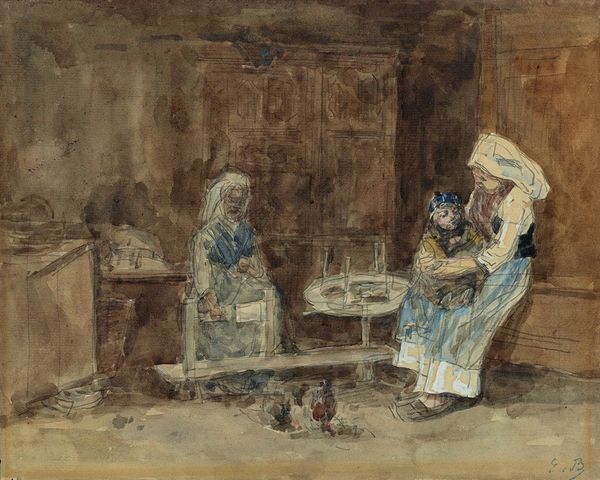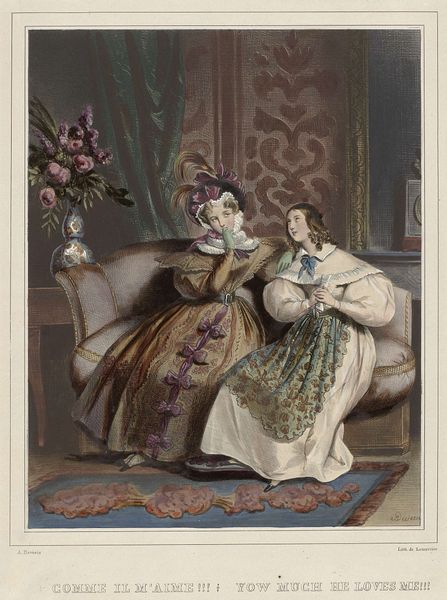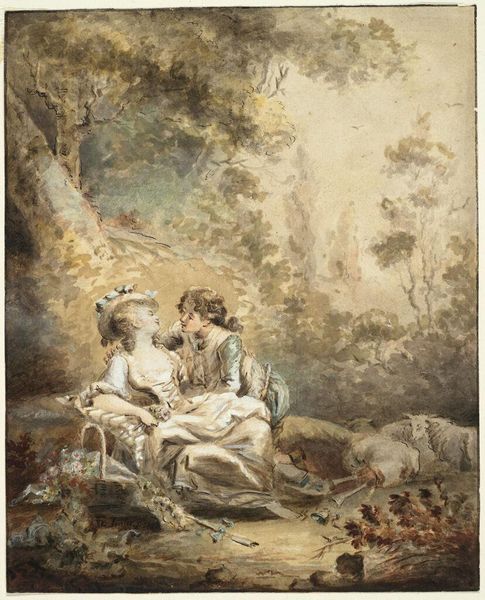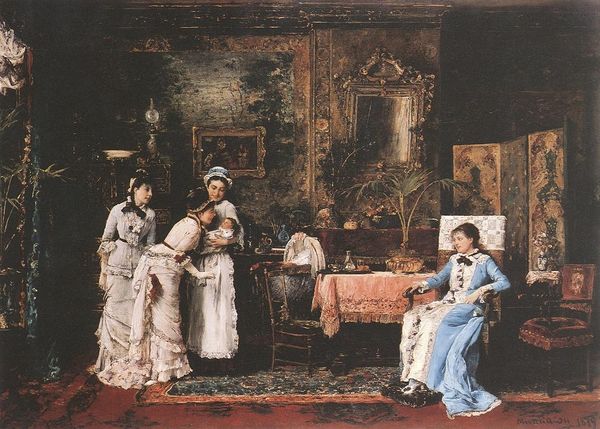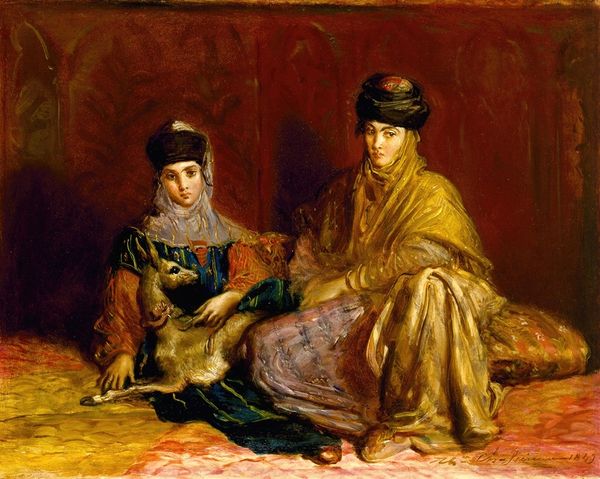
painting, watercolor
#
portrait
#
figurative
#
painting
#
impressionism
#
figuration
#
oil painting
#
watercolor
#
genre-painting
#
watercolor
Copyright: Public Domain: Artvee
Curator: Looking at it, I feel an unexpected peace. Like eavesdropping on a quiet confidence between sisters or friends. There is just a gentle and wistful silence to this watercolor that I love. Editor: I agree, there’s a real intimacy present. What you're responding to might come from how Winslow Homer captures a specifically feminine space in this genre painting, titled "Two Ladies," which dates to 1880. Curator: Feminine, yes, but without that "perfumed and polite" kind of stereotype, you know? More of a shared daydream feeling...like they are the only two people in the world right now. Do you get that? Editor: Absolutely, and part of that effect comes from Homer’s delicate use of watercolor, which lends the scene a hazy, dreamlike quality. The women are both dressed in white, almost blending into the background, which draws attention to their facial expressions and body language, inviting the viewer into their private sphere. Their soft, naturalistic appearance really distances them from more traditional, formal portraiture conventions. Curator: Exactly. And he catches them at a moment off-guard. Not posed at all. I find it fascinating that it's considered impressionist too. His use of light, shadow, and color feels somehow emotional to me. Editor: Right, his technique reflects the impressionist movement’s interest in capturing fleeting moments. It is interesting to me to see two figures like this interpreted in such a soft and intimate manner. I start to think about who they might represent beyond simply being society ladies of the late nineteenth century. Their body language suggests they are potentially sharing secrets and are in community with one another in the midst of what would probably have been a highly structured world. Curator: I never considered their social context before! That actually adds a new layer for me. This wasn’t just a pretty picture—Homer captured an untold story. Editor: It's easy to get lost in its aesthetic appeal. By thinking critically about his choice of subject, what is absent, or even why Homer was drawn to portraying this interaction, we start to pull apart some fascinating tensions, especially considering his broader artistic interests. Curator: Right? Before this, it just struck me as pretty. Now I find the piece far more moving, even radical for its time. Editor: Indeed, artworks can shift in meaning the more deeply we engage with them. Thanks for sharing your perspectives!
Comments
No comments
Be the first to comment and join the conversation on the ultimate creative platform.
